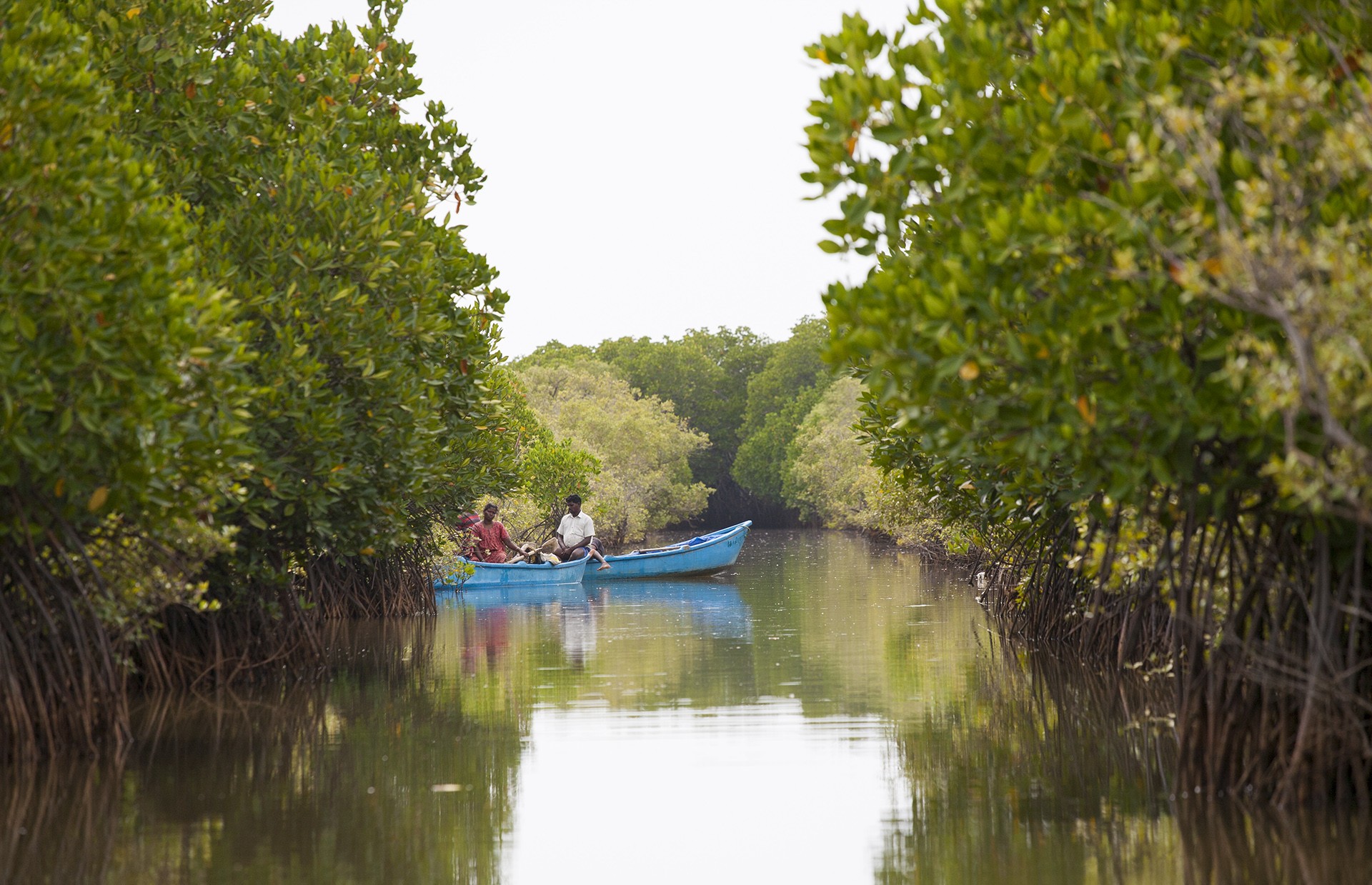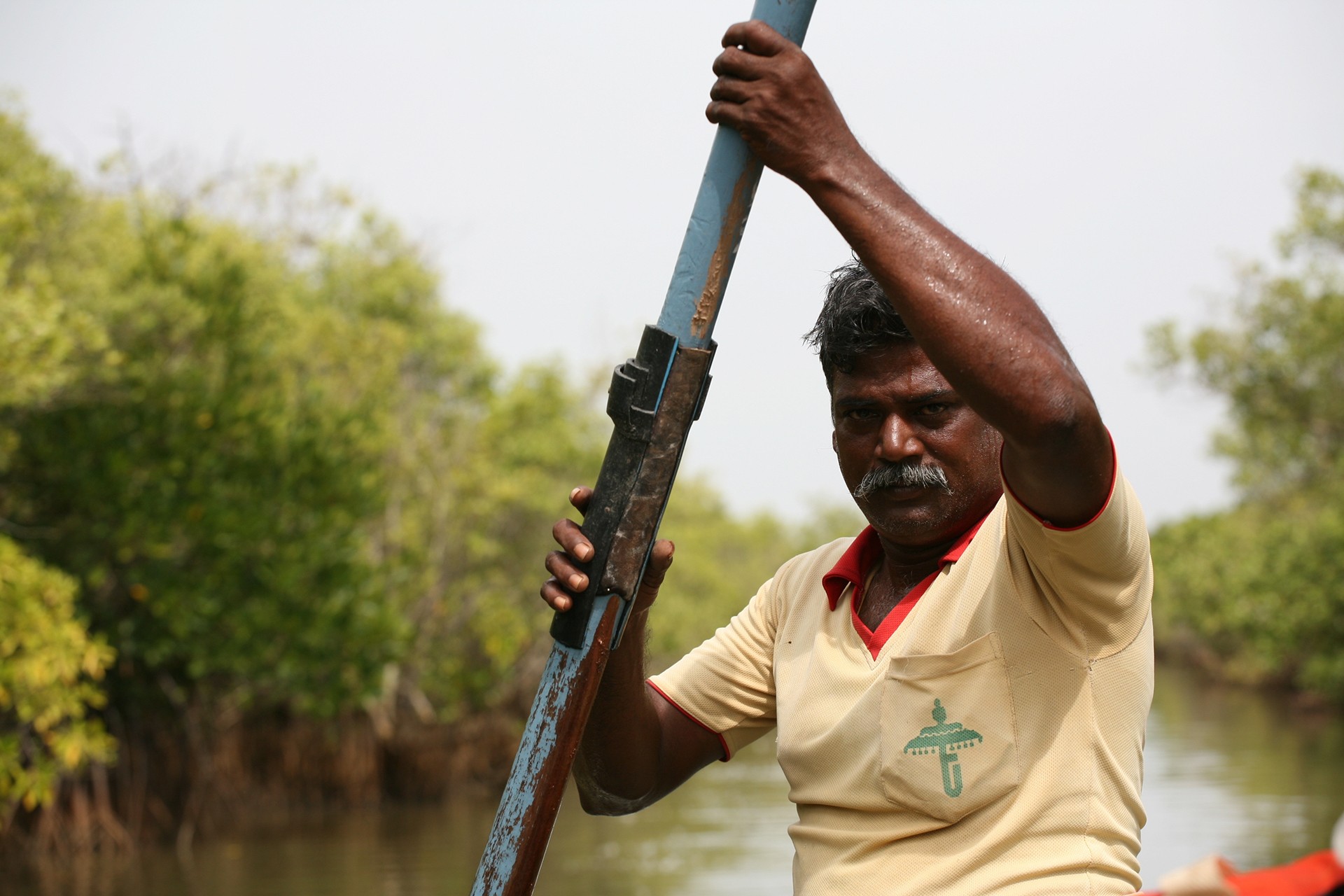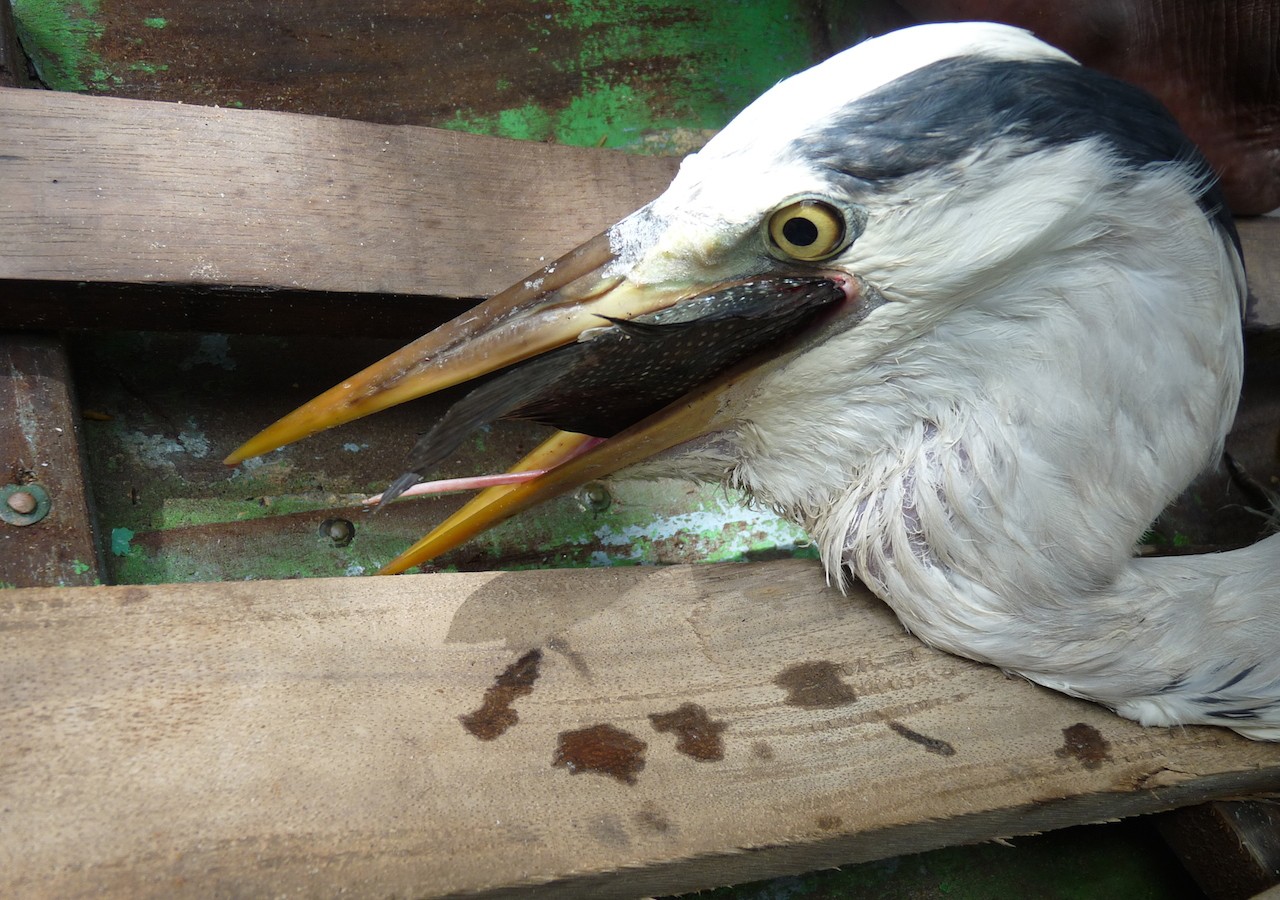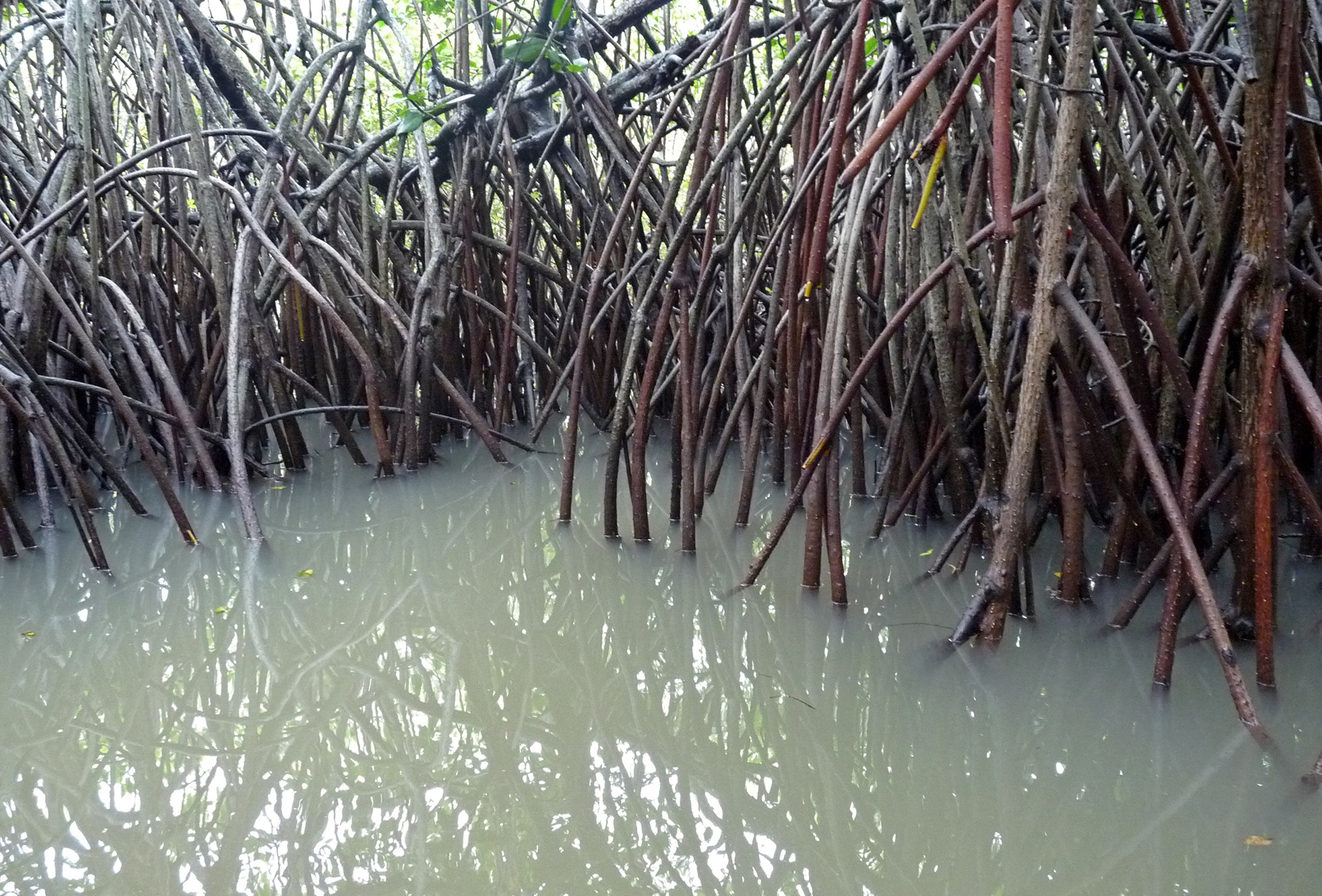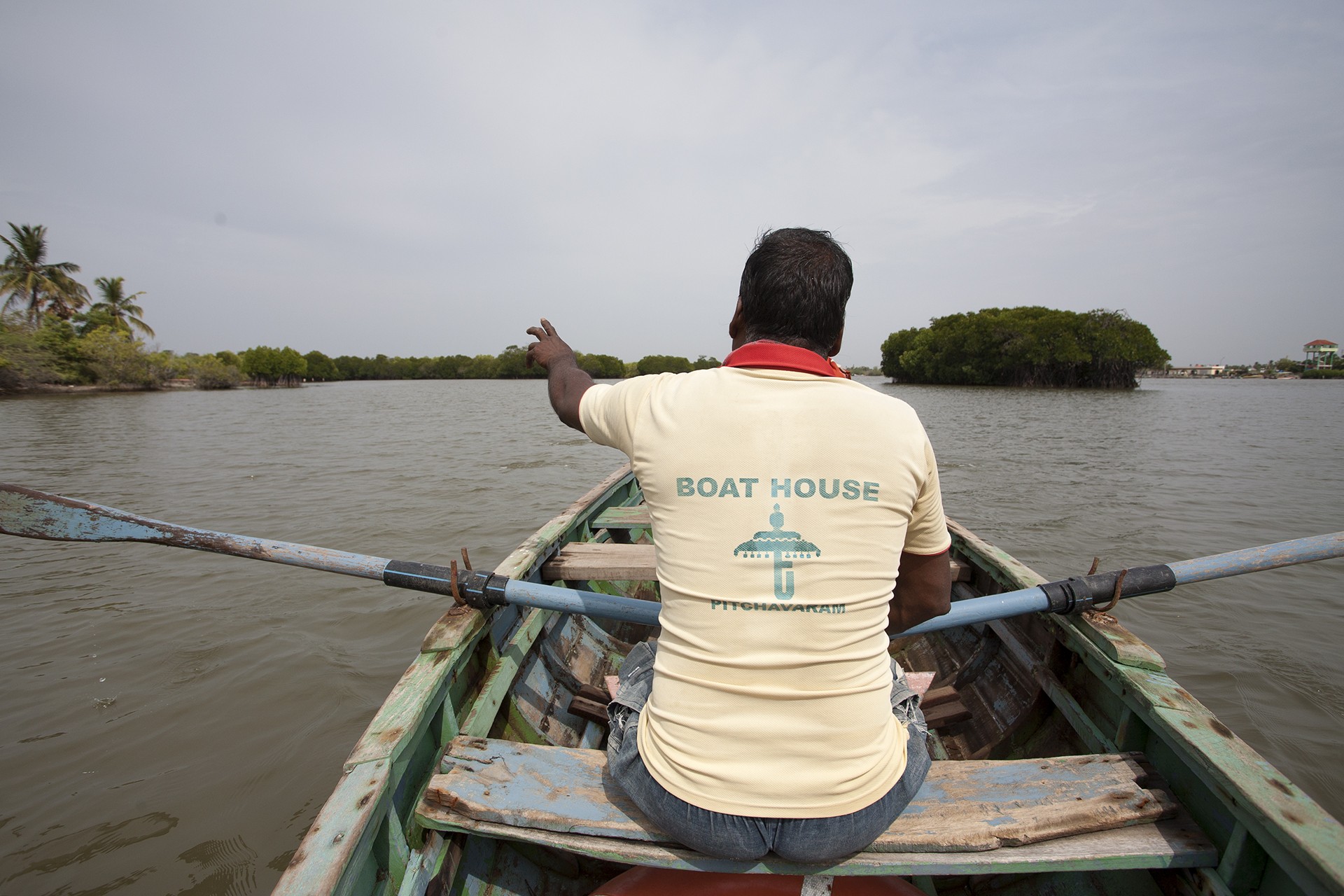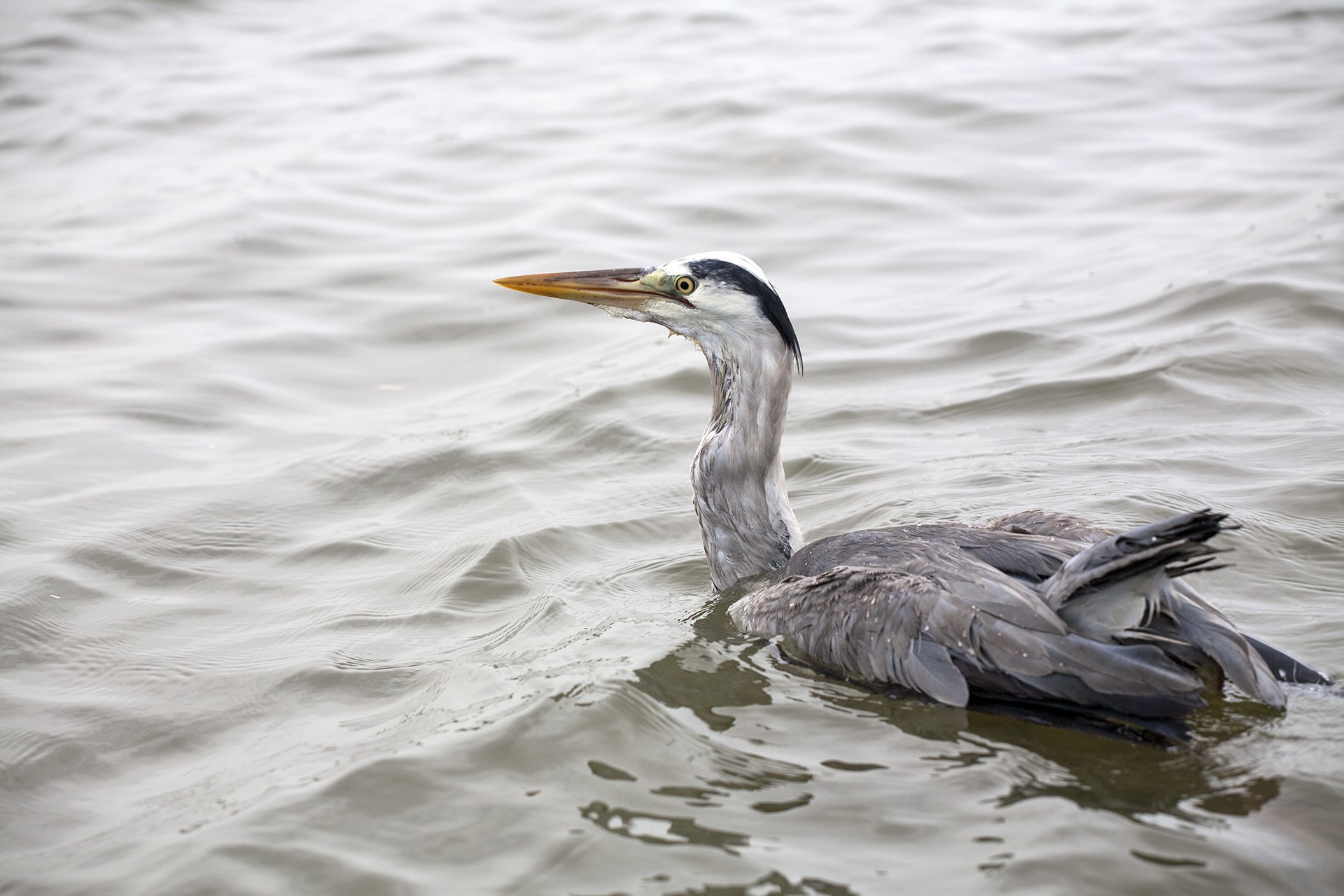When we were deep within the tangle of mangroves, I shut my eyes tight and let my defences yield. The darkness that slid into me was only briefly terrifying. Then it became a tunnel of undiluted calm in the claustrophobia of that littoral jungle.
There was a fleeting terror of drowning, of being impaled on the fearsome spikes that poked out of the lead-grey water like dagger tips, of getting lost here after sundown without anybody to heed my cries for help. But all of that passed within a blink. When I lay back, tranquillity engulfed me.
Through half-shut eyes, I watched the reflection of our boat scatter in its rippled wake. Sounds and smells floated up. The swell slapped rhythmically against the weathered wooden hull, its blue enamel paint peeling in places. Whimbrels and plovers sniggered on the beach beyond the unseen sandbar that buffered this coastal wilderness from the frothing breakers of the Bay of Bengal. A vagrant wind ran its invisible fingers through the rickety canopy. Sunlight, mild and balmy, filtered down, painting dappled tattoos on our boat that melted away as they formed. The scent of sun-baked skin mingled with the scummy odour of estuarine ooze. A whiff of grease and sour rust pinched my nostrils as the oar sleeve creaked insistently against the pin. I licked my lips, savouring the tang of the salt-breeze.
“Something seems to be stuck there,” our boatman Bhaskaran’s voice cut into my reverie. “A bird.”
I sat up and blinked in the direction he nodded towards. He chunked his oar briskly and made towards a dark cluster of mangroves.
We were on an extraordinary safari in Pichavaram, the third most expansive tidal mangrove habitat in South Asia after the Sundarbans and Odisha’s Bhitarkanika. Just 16km from the temple town of Chidambaram in Tamil Nadu’s Cuddalore district, Pichavaram made news in December, 2004, when it remained miraculously unscathed by the tsunami that had wreaked havoc all along the southern Coromandel coast. I had been here once before, shortly after a furious October cyclone. Then, too, Pichavaram maintained a mien of calm in the midst of uprooted trees, twisted electric cables and widespread carnage.
Ably guided by our charming and well-spoken boatman, my photographer friend Azhar and I had been on the water for nearly 40 minutes. We had discovered that Bhaskaran, a native of these parts, spoke excellent Malayalam, a consequence of his having worked as a labourer in a teak transportation enterprise in Nilambur, Kerala. An unfortunate accident had left him with an injured leg. When he became unable to haul wood, he returned to his hometown and found this lower-paying contract job in Pichavaram with Tamil Nadu Tourism. In his late 40s, he had a family to support and two girls to marry off, he said. Yet, there was no bitterness in his voice as he recounted his misfortune and his smile never faded for an instant.
We followed Bhaskaran’s eyes to a Grey Heron, its slender neck kinked at an angle. It appeared to be shaky on its feet, as if weighed down. Had the bird’s neck snapped? Had it been seized by one of those menacing red mangrove crabs?
As our boat inched closer, we saw clearly that the bird was gagging. Something protruded from its maw. We suspected it to be a plastic bottle, but the shimmering obstruction turned out to be the silvery tail-end of a fish. It was a Pearlspot Cichlid, a highly prized catch of the brackish backwaters, and its razor-sharp dorsal fin-tips were snagged in the heron’s throat. Seeing us, the heron panicked and attempted to hide in the thickets.
Bhaskaran handed me an oar and, in his acquired northern Malabar accent, urged, “Hold it firmly in the water. Don’t row or you’ll drift off.” He then waded, barefoot, through the murky ooze towards the bird, clasped it with both hands as it tried to fight him off with jabs of its yellow bill, and brought it into the boat. Sincerely, but rather indelicately, Bhaskaran attempted to free the fish but it was jammed in the bird’s throat in a tricky position.
As he stepped back into the boat, a sharp mangrove root sliced into his ankle, drawing a gush of blood. Now we had two casualties to worry about. I reached for a strip of waterproof plaster from my first-aid kit and gave it to Bhaskaran. He smiled, washed his wound with drinking water from a plastic bottle, and put the plaster away in his pocket. “For later,” he smiled reassuringly. “This is not serious.”
The bird, its golden eyes glaring, thrashed its wings and tried to escape but Bhaskaran bound its leg to the boat with a length of plastic string. It attempted to champ its jaws but they wouldn’t shut. The fish, lodged at an uncomfortable angle in the heron’s throat, seemed to have a twitch of life left in it, and that complicated the task of swallowing. A part of the ventral fin had already gouged a tiny bloody gash in the elastic skin of the bird’s lower mandible, and the head of the fish was stuck sideways in the bird’s crop. With its tongue sticking out from under its intended prey, the heron looked miserable. These birds are known to swallow small and medium-sized fish without fuss, so this seemed a rather awkward accident.
To our alarm, the bird started to make choking and coughing noises and we feared it would die as we watched. We were too inexperienced and too far away from help, and without cellular signal, we couldn’t alert anybody on shore about this avian veterinary emergency. Getting back to shore was our priority, but we had already navigated deep into the heart of the mangrove swamp, and it would take us a good hour and a half to pick our way back through the channels.
“Not every boatman knows these little routes,” Bhaskaran said. “Had you rowed here alone, you’d be lost. After nightfall, this place can become quite scary!”
“Are there crocodiles?” I asked, worrying if the brackish water sheltered any saltwater crocodiles, but Bhaskaran shook his head and smiled. A few days ago we had met herpetologist Romulus Whitaker at his home in Chengalpet near Chennai. When he heard of our plans to visit Pichavaram, he wondered aloud about it perhaps being a great place to release some salties. Luckily, no one had spotted any here.
The river systems of the Vellar and Coleroon, both distributaries of the Cauvery, unite at Pichavaram to create a labyrinth of mangrove islets linked by criss-crossing channels of brackish water. This is the northern fringe of the Cauvery estuarine system and a sandbar at the head of this coastal wilderness separates Pichavaram from the Bay of Bengal. All of 1,100sqkm, the extensive wetland is well worth a day-trip. Along with other large mangrove ecosystems on the Coromandel Coast, like Muthupet Lagoon 160-odd-km south in Thiruvarur, these wetlands constitute an important barrier against erosion and act as a shock-absorber against tidal waves and tsunamis.
Mangroves shelter a rich biodiversity, not just of megafauna such as crustaceans, fish, reptiles, birds and mammals, but fungi, bacteria, zooplankton and phytoplankton, too. A total of 12 true mangrove species have been recorded in Pichavaram, most of which are classified as endangered or near-threatened. Some species are endemic to Pichavaram. Mangrove species that thrive in oxygen-starved brackish waters are characterised by pneumatophores or breathing aerial roots that protrude upwards from the water and lie exposed at low tide. Certain mangrove species have stilt roots that diverge from the main stem at an angle and support the trees on the thin substrate. Some also have peculiar knee-shaped roots. Most mangrove species are highly tolerant of brackish water. However, in Pichavaram, some species have declined due to the increasing salinity.
The trees do not grow very tall and are packed densely together. They have tough, woody stems and a variety of hard waxy leaves. Many are known to possess medicinal properties. “Some are toxic but their antidotes grow here, too,” Bhaskaran informed us. He pointed to a species of Exoceria, which produces a toxic milky sap that fishermen use to poison fish. He showed us how in one species of mangrove the seed germinates while still on the tree. Drifting away on currents, the young saplings adhere to the silt and take root quickly.
The islets in Pichavaram are separated by broad, deep lagoons — the highways — and inlets just wide enough to allow a boat to pass. Motorboats ply the lagoons but the inner channels can be explored only by rowboat. As we negotiated these narrow passages, Bhaskaran instructed us to duck and lie close to the boat to protect our heads. Crabs the size of coconuts clambered among the branches. Common Kingfishers and Pied Kingfishers, perched inches above, peered down at us. Striated Herons fished precariously on overhanging branches. Parakeets gossiped in the shrubbery as sunbirds flitted among the blossoms of the flowering mangrove trees.
There’s an interesting legend connecting Pichavaram with the Thillai Nataraja temple at Chidambaram, where Lord Shiva is portrayed as the cosmic dancer. Thillai refers to the local name for a species of mangrove tree, Exocoeria agallocha, which grows in Pichavaram. It is believed these forests were once home to sages whose austerity Shiva ventured to test. When Shiva, in the garb of a mendicant, entered the forest, the wives of the rishis swooned in rapture. The enraged sages flung venomous serpents at the intruder, but Shiva decked his dreadlocks with them. Then they sent a tiger after him, but Shiva skinned it and wore its pelt around his waist. When they sent a mad elephant to kill him, Shiva, assuming the form of Gajasamharamurthy, tore it to shreds and devoured it (perhaps the first known record of a jumbo burger?). Finally, when the sages sent a fierce demon to overpower this impudent mendicant, he pinned him down and, standing on his back with one arm outstretched and one leg half-raised, performed the cosmic dance of elation — the ananda tandava made famous and familiar by the classic Nataraja pose. Recognising who the mendicant really was, the sages prostrated before him.
Bhaskaran knew nothing of this myth, but he did tell us some modern anecdotes. Like how Kamal Hassan’s 2008 hit Dasavatharam featured a song sequence shot in Pichavaram. Several other movies have been shot here, and most tourists usually relive the scenes as they head via the broader channels to the sandbar and the beach.
All the while, our bird sat motionless in the boat. We checked on it from time to time. It was alive and had got somewhat used to us. Either that, or its vital reserves were fast depleting. Releasing it here was out of the question. With the fish still jammed in its mouth, the bird would drown. Bhaskaran told us that fishermen sometimes trapped herons and other water birds for the pot. If we released the bird here, he said, it would end up as someone’s dinner. I wondered darkly if his plan was to do the same with the bird. The bird seemed to have read our thoughts. For suddenly, it stood upright in the boat, looking dishevelled and shaken, but otherwise full of beans. We noticed that the fish had disappeared, probably down its throat. We had missed the crucial moment of action.
Slowly, Bhaskaran reached out and untethered the string. He lifted the struggling heron in the air and set it free. The bird flapped feebly, circled and settled its exhausted body on the water, then tucked its legs under its body and raised its tail up like a duck. I have seen gulls and terns swimming in this position, but never a heron. As we watched, the bird paddled swiftly towards an islet. Stepping nimbly onto the shore, it clambered up a mangrove stilt and vanished into the darkness of the thicket. That was the last we saw of it. It felt a bit like one of the last scenes in Life of Pi.
We returned to the jetty and huddled over glasses of sweet tea and biscuits, recounting the day’s events. A storm was gathering over the sea and a flock of grey plovers skimmed the water just inches away. I gazed at the mangroves, now just blotches of green in the distance, and felt grateful for the opportunity to have experienced its web of life, intermeshed with the livelihoods of the humans who subsist on it. I gave Bhaskaran, whose company I had enjoyed and whose conscience and fortitude I had come to admire, a handsome tip. “For your daughters,” I said when he tried to refuse.
All that’s well should end well but this story does not. Months later, I told a friend who was visiting Pichavaram to look up Bhaskaran. She texted me with some news that she had heard from another boatman. Bhaskaran had died in a bike accident a few weeks ago, just days before his elder daughter’s wedding.
My travels have not taken me to Pichavaram since, but every time I see a Grey Heron fishing placidly by the water, my thoughts drift back to Bhaskaran and that adventure in the boat.
Getting there:
Pichavaram is 16km from the temple town of Chidambaram (245km south of Chennai by the East Coast Road (ECR)) in Tamil Nadu’s Cuddalore district.
The Chennai-Rameswaram Boat Mail (Train No. 16101) makes a stop at Chidambaram.
If you are visiting Puducherry, Chidambaram is only 63 km, a 90-minute drive by the ECR, and is well connected by local bus.
